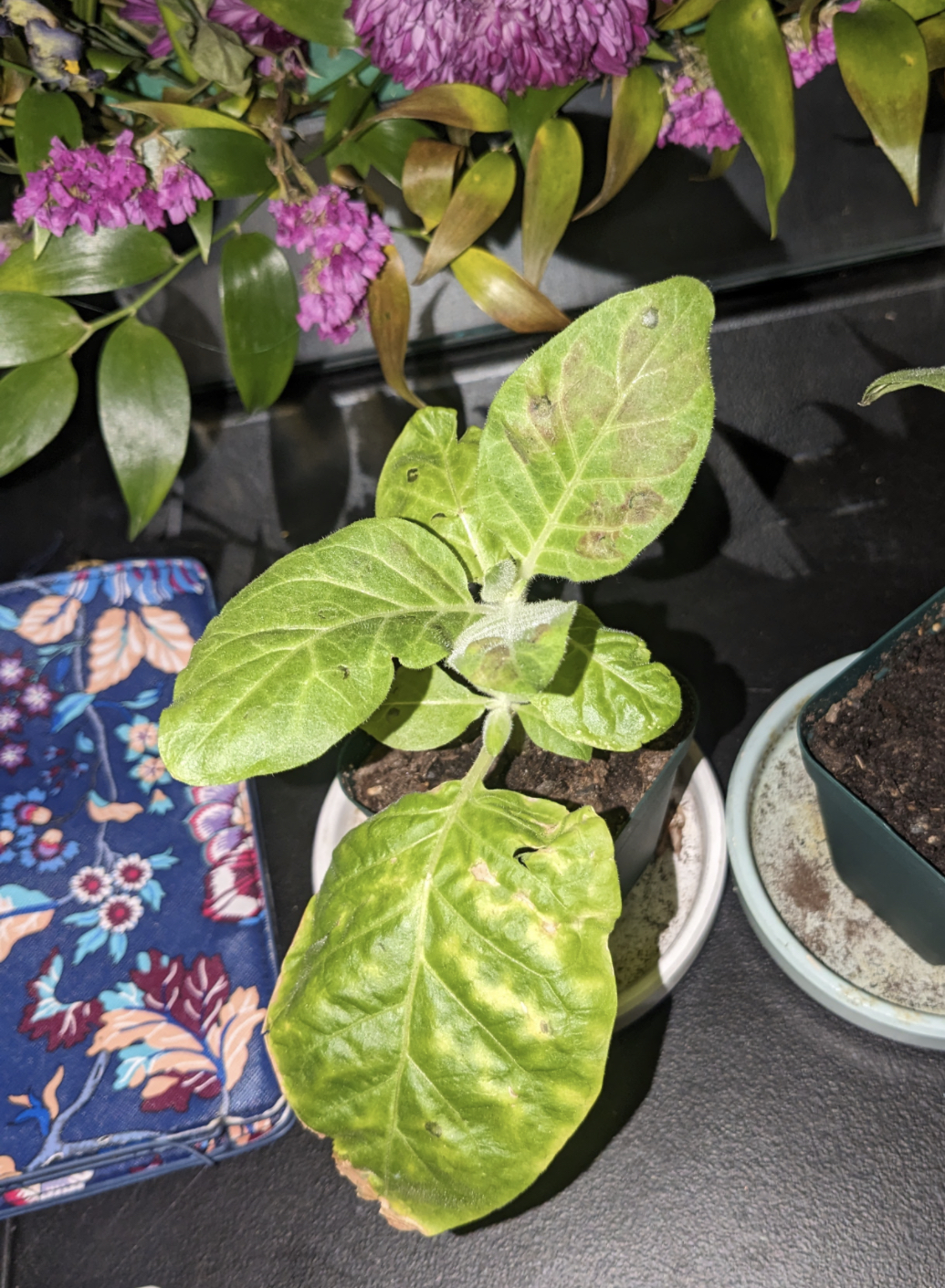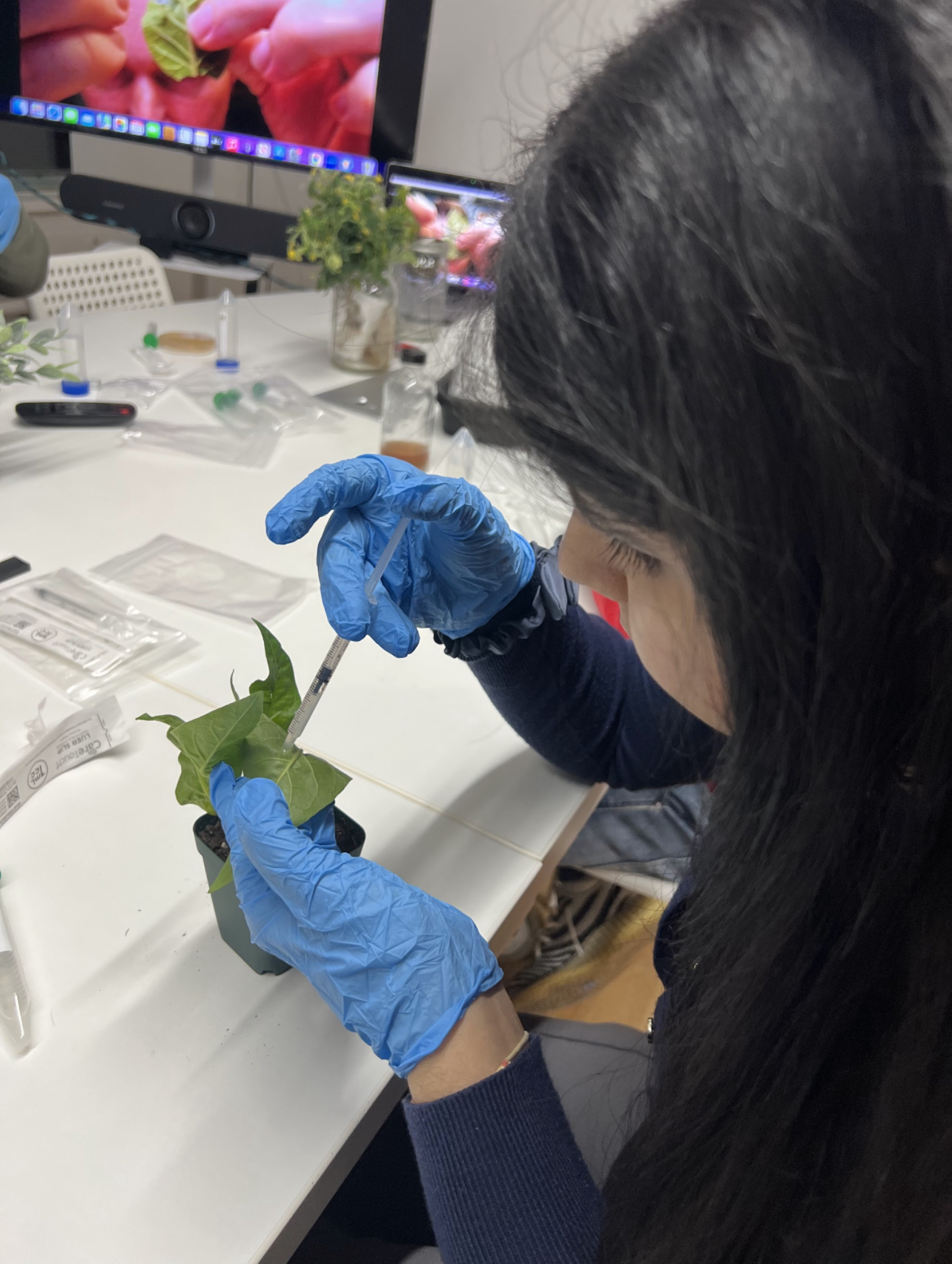Visual Data


Project Duration: 11/30/2023
Project Manager: Pammi Balani
This report aims to record the genetic modification process involving the injection of a vanilla bacterium into a tobacco plant. Genetic engineering opens up numerous possibilities for the future of agriculture, including increased yields, improved crop traits, and the creation of disease-resistant varieties. By exploring these possibilities, genetic engineering offers a pathway to eliminate factors that harm crops, presenting a promising avenue for addressing agricultural challenges.
Conducted with the aim of exploring genetic engineering's potential impact on crops, this experiment seeks to demonstrate the ability to change the DNA of a plant. Using the agroinfiltration technique, we injected plants with a vanilla bacterium, introducing it alongside an agar gel medium. The success of the experiment is indicated by the development of red spots at the injection sites.
The challenges at hand involve the cultivation of weak, unhealthy, and low-yielding crops, often stemming from issues like pests, diseases, climate conditions, and pollution. In this case, we were able to change the flavor profile of the tobacco plant. Through the application of genetic engineering to plants, we aim to pinpoint and incorporate optimal DNA elements. This strategic modification seeks to ensure a consistent production of larger, healthier, and more flavorful crops.
Materials Needed:
What is Agar? Agar is a medium that cures into a gelatinous form. When mixed with the proper chemicals and nutrients, it provides a solid base to grow your bacterial and yeast cultures off of.
STEP 1: Put on a pair of Nitrile gloves. Contamination is critical, as you are providing a platform for bacteria and yeast to grow. They both exist naturally on our skin and in the air, so gloves are a necessity.
STEP 2: Pour the powder into your bottle. Fill your bottle or container that is microwave safe with the correct amount of water(don’t go above 150mL for the bottles we provide with kits). Use a 50mL measuring tube to help get an accurate volume. Put the lid on water and gently shake. The agar should look grainy in the water. Put the cap on the container and barely turn it just to hold it in place. *Note: Do not tighten the lid as it can possibly make the bottle explode.*
STEP 3 : Microwave the Agar Place a paper towel or napkin on the tray in the microwave. Microwave for 30 second increments on a normal setting. Stand and watch for boiling as you do not want it to boil over. Let it rest for a minute if it starts to boil and open the cap to vent. Be careful if you shake the bottle when it is hot it can bubble over. The AGAR media should dissolve in 2-4 minutes. Look at the bottle and make sure you can see clearly through. Let it cool for 30 minutes or until you can hold it without discomfort.
STEP 4: Pour the Agar onto the plates Pour enough to fill the bottom of the plates and place the lid on top. They take around 30 minutes to solidify but this process can be sped up by placing them in the fridge NOT freezer.
STEP 5: Store the plates Option 1: Leave places out a few hours or overnight on a table or counter. Option 2: Store them at 4C in your refrigerator as this lets some of the condensation escape back out. Store upside down so any condensation doesn't drip on the plate.
STEP 6: Making Agrobacterium Agrobacterium, often used in genetic engineering, carries vanilla flavor compounds, which we would like to utilize to change the flavor profile of the tobacco plant. We prepare the agrobacterium culture by growing it in agar gel for roughly 18 hours. Through agroinfiltration, we will inject the vanilla into our tobacco leaves.
STEP 7:(Continuation of making Agrobacterium) Take the freeze dried Agrobacterium tube. Add 4 drops of sterile water using your pasteur pipette. Shake for one minute to ensure the bacteria is dissolved. You may need to add more water.Then add 2 drops of the bacteria to a new LB Rif/Spec plate. Using an inoculation loop, spread bacteria. Let the plate grow overnight ~16-18 hours, or until you see white-ish bacteria begin to grow.
STEP 1: Prepare injection media by adding water. Grab a 50mL tube and fill it to the 50mL line with tap water. Then pipette 1 mL of media into the mL. Screw on cap, and gently shake the media.
STEP 2: Add 4mL of diluted injection media to a 15mL tube. Store the remainder in the fridge
STEP 3: Using an inoculation loop, gently scrape bacteria off a fresh plate until the loop is filled. Place the loop into the tube with 4mL infiltration media and swirl to release bacteria. Shake or gently pipette up & down to break up any clumps.
STEP 4: Use a 1ML blunt syringe to draw up 0.5mL of the media with bacteria. Push out any air from the syringe and place the end firmly against the underside of a leaf on a flat smooth spot avoiding veins.
STEP 5: Place a finger gently but firmly against the other side to support the leaf. Very slowly depress plunger to push the media & bacteria inside the leaf. You should see the liquid saturated inside leaf tissue as it spreads.
STEP 6: If the experiment was successful, the places you injected the Agrobacterium into the leaf should have a dark red spot.
Lacking access to natural sunlight and devoid of a grow light, my tobacco plant exhibited negligible signs of growth. Furthermore, the ambient temperature in my basement apartment was excessively cold, dropping below 50°F. This suboptimal temperature proved detrimental to the growth of the tobacco plant, as these plants thrive in warm and dry conditions.
The resolution to the predicament would have entailed either placing the plant outdoors or acquiring a grow light. However, logistical constraints hindered these options, as leaving the plant outside posed the risk of feline interference and procuring a grow light within a day proved unfeasible. Moreover, a more thorough exploration of optimal temperature requirements could have averted the impediment to plant growth, allowing for strategic placement near a portable heater to mitigate the unfavorable conditions.


The places I injected the Agrobacterium into the leaves formed dark red spots, However, the plant was not able to survive due to the temperature and light in my room.
In conclusion, an enhancement to my procedural approach would involve a meticulous understanding of all preparatory steps before commencement, given the multitude of prerequisites involved. The genetic engineering process, as elucidated, revealed the potential to isolate specific genes and transfer them to alternative organisms, thereby altering their entire DNA structure. This groundbreaking procedure heralds a new era wherein forthcoming agriculturalists and scientists can tailor their crops, crafting plants endowed with precisely desired traits, including sweetness, quality, and overall flavor.